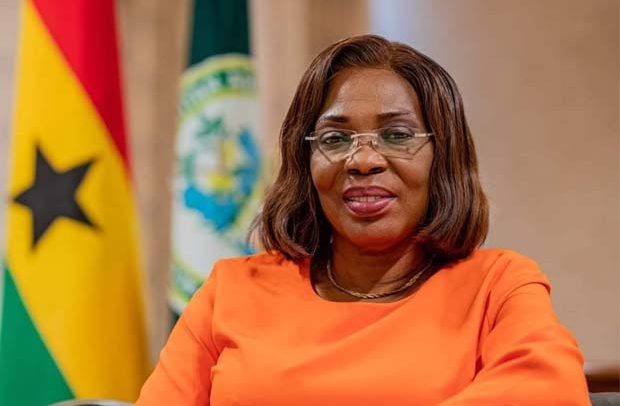
By Samuel OWUSU-ADUOMI
In a stunning and historic political comeback, Donald Trump has secured a decisive victory in the 2024 U.S. presidential election.
After losing to Joe Biden in 2020, enduring a whirlwind of legal challenges and even surviving an assassination attempt that rattled his campaign at its peak, Trump has emerged victorious once again, captivating not just the American public but the world.

As political analysts and global leaders reflect on the significance of this moment, one theme stands out: the power and importance of strategic diplomatic communication.
This pivotal tool is crucial in shaping the future of international relations, as world leaders and diplomats work to recalibrate their approach in the wake of Trump’s surprising return to the Oval Office.
The congratulatory messages pouring in from every corner of the globe serve as a vivid illustration of why diplomatic communication is not just a formality but a critical element of foreign policy.
Whether it’s a tweet from Israeli Prime Minister Benjamin Netanyahu or a message from Ukrainian President Volodymyr Zelenskyy, the rapid acknowledgments highlight the central role of clear, intentional communication in fostering cooperation, maintaining alliances and paving the way for future negotiations. But why is this form of diplomacy so vital, especially at this juncture in global politics?
A foundation for global cooperation
At the heart of diplomatic communication lies the art of relationship-building. For world leaders, offering congratulations to Trump is not merely a gesture of goodwill, but an invitation for future dialogue.
Every message from heads of state, whether from the UK, France, India or even Russia, serves to send a signal of openness and commitment to continued cooperation, despite potential policy differences. Strategic communication here allows for the establishment of open channels, fostering trust and facilitating mutual understanding.

For instance, Israeli Prime Minister Netanyahu’s message praising Trump’s “historic return” highlights the longstanding alliance between Israel and the United States. This relationship, which has flourished over the years, will need to be nurtured and strengthened under Trump’s renewed leadership.
Similarly, leaders from nations like India, Australia and the Philippines have taken the opportunity to reaffirm their commitment to the U.S., framing Trump’s victory as a chance to deepen bilateral ties and promote shared interests. The language of congratulations, often laced with future promises, helps mitigate any apprehension about the shifts that may come with a change in administration.
Setting the stage for future policies
Diplomatic communication isn’t just about extending congratulations; it’s also about managing expectations. For nations and international organisations, Trump’s return to power means a potential shift in policy priorities.
Whether it’s his “America First” approach, his stance on global trade or his unconventional rhetoric, Trump’s past presidency was marked by both bold decisions and diplomatic turbulence. As such, the messages sent by world leaders are calculated to balance optimism with caution.
French President Emmanuel Macron’s message to Trump, for example, echoed his readiness to collaborate “with your conviction and mine,” signalling that while France remains open to cooperation, it is also bracing for negotiations that may differ from previous agreements.
Similarly, British Prime Minister Keir Starmer framed the UK’s relationship with the U.S. in terms of shared values and mutual prosperity, underscoring the ongoing significance of the U.S.-UK “special relationship”. These statements convey both hope for continued engagement and an understanding that the nature of that engagement may evolve.
In contrast, NATO Secretary-General Mark Rutte’s message underscores a desire to strengthen the alliance despite the differences Trump has expressed about NATO’s role in Europe’s defense. For NATO allies, managing expectations is crucial.
Trump’s first term saw a critical reassessment of America’s commitment to NATO, with the former president urging other member-states to increase their defense spending. By re-engaging with him, world leaders will be navigating the complexities of these expectations, seeking to find common ground on defense, security and international cooperation.
Promoting mutual understanding
One of the most valuable aspects of strategic diplomatic communication is its capacity to promote mutual understanding. This is particularly important when dealing with a political figure like Donald Trump, whose policies and actions often polarised international opinion.
Trump’s “America First” stance was a direct challenge to long-standing global norms, leading to strained relations with many countries during his first term. From trade tariffs to climate agreements, Trump’s approach disrupted the international status quo. In order to bridge these divides, diplomatic communication becomes an essential tool for conveying intentions, mitigating risks and addressing concerns.
Ukrainian President Zelenskyy’s congratulatory message, which praised Trump’s commitment to “peace through strength”, reflects the delicate balance world leaders must strike in order to maintain cooperation while also addressing divergent policy goals. Ukraine, which continues to rely on U.S. support to fend off Russia’s invasion, has long emphasised the importance of a robust American stance on security.
Zelenskyy’s statement signals an eagerness to work with Trump, emphasising his hope that Trump’s principles will help bring “just peace” to Ukraine. By framing this in terms of shared interests, Zelenskyy navigates potential tensions, recognising that while Trump’s approach may be different, it could still align with Ukraine’s needs.
This theme of mutual understanding is also echoed in the messages from other world leaders, such as Indian Prime Minister Narendra Modi, who congratulated Trump and expressed a desire to “further strengthen” the U.S.-India relationship.
India’s strategic partnership with the U.S. has evolved significantly over the past two decades, and Modi’s remarks reflect an understanding that regardless of shifts in the U.S. political landscape, the need for continued dialogue and cooperation remains paramount.
Diplomatic communication as a tool for peaceful resolution
At its core, strategic diplomatic communication is also about addressing conflicts and preventing misunderstandings from escalating into crises. Whether it’s the ongoing tensions between the U.S. and China, the war in Ukraine or the future of NATO, diplomatic messaging plays a critical role in preventing global tensions from spiralling out of control.
In this context, the swift and strategic messages sent by world leaders serve as an early mechanism for de-escalation. They send a message of stability and predictability—qualities that are essential in navigating international conflicts.
For example, Russian President Vladimir Putin, while not publicly commenting on Trump’s victory yet, is likely to approach the U.S. in a pragmatic way as indicated by the remarks from former Russian President Dmitry Medvedev.
A lack of immediate conflict and the presence of diplomatic communication allow for a more measured approach to addressing future challenges, reducing the likelihood of aggressive posturing or unintentional provocation.
In this way, strategic diplomatic communication serves as an essential tool for conflict resolution, enabling nations to engage in productive dialogue, address concerns and seek peaceful resolutions to disputes.
The vital role of strategic diplomacy in global politics
As we look to the future, one thing is clear: the success of Donald Trump’s second term will hinge not only on his domestic policies but also on his ability to leverage diplomatic communication to rebuild, renegotiate and redefine America’s relationships with the world.
World leaders have shown that they are ready to engage with him; and through thoughtful, strategic diplomatic messaging, the United States can chart a course for stability, cooperation and peace.
By ensuring that messages are clear, constructive and conducive to mutual understanding, nations can navigate complex geopolitical landscapes and maintain the delicate balance required for global peace and prosperity. And in this moment of historical political change, the world is watching to see how the power of strategic communication will shape the future of international relations under President Donald Trump’s leadership.
Key insights for political communicators
The congratulatory messages from world leaders following Donald Trump’s 2024 presidential victory offer critical insights into the strategic nature of diplomatic communication.
For political communicators, these messages serve as a textbook example of how to craft messages that balance diplomacy, public relations and policy positioning. The following are key points and valuable notes to consider when analysing the strategic nature of these congratulatory messages and the embedded key messages they contain.
- Signalling commitment to diplomacy and engagement
Strategic purpose:
Congratulatory messages are not just ceremonial; they are calculated steps in maintaining and strengthening diplomatic relationships. These messages are a way for world leaders to publicly signal their willingness to engage with the new administration, regardless of past differences or disagreements.
Key embedded message
- Commitment to collaboration: The congratulatory messages emphasise continued cooperation and mutual respect. For example, French President Macron’s message—“I am ready to work together as we did for four years…”—reinforces that despite past differences, collaboration will continue.
- Invitation for future dialogue: Messages often frame the congratulatory note as a precursor to continued talks, with leaders stating they look forward to future collaboration. This message is essential for maintaining diplomatic momentum.
- Managing international relationships amid shifting dynamics
Strategic purpose
For world leaders, particularly those who had disagreements with Trump’s policies in the past (e.g., on trade, climate or NATO), sending a congratulatory message helps manage the diplomatic relationship by signalling a readiness to work together, even if ideological or policy differences persist.
Key embedded message:
- Acknowledgment of past challenges but optimism for the future: Ukrainian President Zelenskyy, for example, highlighted Trump’s commitment to “peace through strength”, suggesting that this policy principle would be key to resolving the crisis in Ukraine. This message subtly acknowledges the challenges from the past, but conveys a hope that Trump’s leadership could still provide valuable support in the future.
- Diplomatic recalibration: NATO Secretary-General Mark Rutte’s comment—“I look forward to working with him again to advance peace through strength through #NATO”—shows a desire to recalibrate the U.S.-NATO relationship while staying focused on the alliance’s core goals.
- Fostering trust and building long-term alliances
Strategic purpose
Congratulatory messages often emphasise long-term relationships and trust-building. The aim is to send a message of stability, indicating that no matter the political shifts in the U.S., the foundational alliances and partnerships remain intact.
Key embedded message:
- Strengthening historical alliances: Israeli Prime Minister Netanyahu’s praise of Trump’s “powerful recommitment” to the U.S.-Israel alliance underlines the importance of maintaining and strengthening alliances that have been foundational to U.S. foreign policy.
- Future stability: Leaders like UK Prime Minister Keir Starmer emphasised the continued strength of the U.S.-UK “special relationship,” reinforcing that regardless of changes in leadership, both nations share common values and interests.
- Managing public expectations and preparing for policy shifts
Strategic purpose
Leaders use congratulatory messages to prepare both their domestic audiences and foreign governments for potential policy shifts or recalibrations. This helps to avoid any abrupt disruptions and sets expectations about what the new administration will prioritise.
Key embedded message
- Acknowledging policy differences: The messages contain subtle references to past disagreements or differences in policy. For example, Macron’s comment about “your conviction and mine” hints at the potential for differences in their policy approaches but underscores that both parties can still find common ground.
- Signalling policy continuity: On the other hand, leaders like Narendra Modi, with his message of “I look forward to reviewing our collaboration to further strengthen the U.S.-India relationship”, provide reassurance that key relationships will continue to grow despite the transition. This ensures stability in important geopolitical alliances.
- Promoting national interests and values
Strategic Purpose
Many of the congratulatory messages subtly emphasise national interests and shared values that political leaders hope to advance during the next U.S. administration. By framing Trump’s victory within the context of mutual values and goals, these messages strengthen ties between nations.
Key embedded message
- Shared values: Keir Starmer’s statement about standing “shoulder to shoulder” in defense of “freedom, democracy and enterprise” conveys that the UK values these principles and looks forward to furthering them with the U.S. under Trump.
- Promotion of national security goals: NATO Secretary-General Rutte’s statement about Trump’s leadership being key to keeping the alliance strong highlights the military and defense objectives that underpin the relationship with the U.S. In the context of NATO, this statement emphasises the importance of securing European defense and maintaining a united front against external threats.
- Reinforcing strategic global messaging
Strategic purpose
Congratulatory messages also serve as part of the broader geopolitical narrative that world leaders wish to shape. Whether it is addressing conflicts, promoting peace or advancing economic partnerships, these messages are embedded with a broader strategic intent.
Key embedded message
- Commitment to peace: Both Ukrainian President Zelenskyy and NATO’s Rutte express optimism that Trump’s foreign policy will bring stability and peace, a key message for countries involved in or impacted by global conflicts. This diplomatic message emphasises a shared commitment to peace and security.
- Economic and trade collaboration: Indian Prime Minister Narendra Modi’s message highlights the potential for further strengthening the U.S.-India relationship, especially in terms of trade, technology and innovation. This positions the U.S. election results within a larger framework of economic growth and international partnership.
- Soft power and public diplomacy
Strategic purpose
For political communicators, congratulatory messages offer an opportunity to project soft power and bolster a country’s international image. These messages are crafted to portray the sender’s nation as responsible, cooperative and forward-looking.
Key embedded message
- Projecting global leadership: Leaders like European Commission President Ursula von der Leyen used the congratulatory message to reinforce the EU-U.S. partnership. By emphasising a “true partnership,” the EU aims to solidify its standing as a key global player with the U.S.
- Signalling stability and responsibility: Hungary’s Prime Minister Viktor Orban called Trump’s victory “the biggest comeback in US political history,” framing it as a “much-needed victory for the world.” This not only boosts Trump’s image, but also projects Hungary as a supporter of political resilience and global stability.
- Addressing political and social divides
Strategic purpose
In a polarised political environment, congratulatory messages also serve to address internal and external divides, conveying messages of unity and healing. This is particularly important in a time of domestic unrest or after a contentious election.
Key embedded message
- Unity and stability: Many leaders, such as Australia’s Prime Minister Albanese, focus on the idea of the U.S. being a “true ally”, reinforcing the global desire for political stability. This serves to remind both domestic and international audiences that regardless of internal divisions, the U.S. remains an essential partner in the global order.
Conclusion
For political communicators, the strategic nature of congratulatory messages in the aftermath of major political events like Trump’s election win is clear. These messages are not simply expressions of goodwill; they are carefully crafted communications that serve multiple purposes: signalling readiness for future collaboration, managing expectations, reinforcing national interests, and addressing global and domestic challenges.
By understanding the embedded messages in these communications, political communicators can gain insights into the priorities and diplomatic strategies of both the U.S. and its global partners.
The post Decoding the strategic communications behind world leaders’ congratulatory messages to Trump appeared first on The Business & Financial Times.
Read Full Story








Facebook
Twitter
Pinterest
Instagram
Google+
YouTube
LinkedIn
RSS